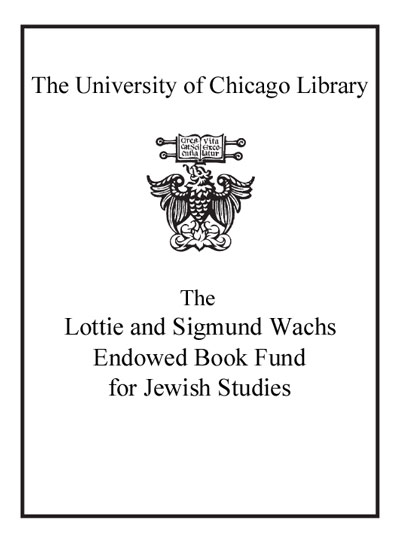Review by Choice Review
Horwitz (Illinois Wesleyan Univ.) has written an indispensable account of the "odz Ghetto, juxtaposing the Nazi objective of making "odz, renamed Litzmannstadt, a city "cleansed" of Jews, with the exploitation of its ghetto labor. In describing the moral dilemmas faced by the ghetto's Jewish leadership as the Nazis subsequently embarked on annihilating the Jewish population, Horwitz focuses on Chaim Rumkowski, the leader of the "odz Jewish Council. Horwitz states that Rumkowski's strategy was to save as many Jews as possible by acquiescing to Nazi demands for the deportation of the Jewish population to the Chelmno death facility. The controversial Rumkowski, it appears, staked all on "forestalling" the dissolution of the ghetto and the deportation of the remaining population, hoping that the end of the war was near. In the end, Rumkowski's strategy failed because the Germans "from start to finish controlled the setting and dictated the parameters of daily life and the pace of destruction ." Horwitz raised the question of whether the annihilation of the ghetto could have been avoided had Nazi decrees been defied, and concludes that Rumkowski believed such an act would have brought the "odz Ghetto to a swift and bloody end. Summing Up: Recommended. Upper-division undergraduates and above. J. Fischel emeritus, Messiah College
Copyright American Library Association, used with permission.
Review by Booklist Review
In 1940 the Nazis forced the 200,000 Jews of Lodz, Poland, into a sealed ghetto, creating a huge work camp for the German war effort. In 1941 they were joined by more than 20,000 Jews from Austria, Germany, Czechoslovakia, and Luxembourg. Most of them died from starvation and exhaustion or were sent to perish in death camps. Much has been written about the ghetto, including The Chronicle of the Lodz Ghetto, 1941-1944 (1987), edited by Lucjan Dobroszycki, and Lodz Ghetto: Inside a Community under Siege (1991), edited by Alan Adelson and Robert Lapides. Horwitz first offers background statistics; then examines ghetto life, the role of Mordechai Chaim Rumkowski (the ghetto's leader), and that of the Jewish police; the tragedy of Jewish children; deportations; and much more. Reading Horwitz's book, which includes 20 color illustrations, 12 halftones, and 2 maps, is a haunting experience, but this is a unique and invaluable document depicting the ghetto's history.--Cohen, George Copyright 2008 Booklist
From Booklist, Copyright (c) American Library Association. Used with permission.
Review by Publisher's Weekly Review
The Nazis' use of bureaucracy to achieve their genocidal aims comes through clearly in this historical tour de force. The Nazis attempted to "re-engineer" the Polish city of Lodz, home to more than 230,000 Jews (one-third of the city's population) before the war, into a model--and Judenfrei--German city embodying health and beauty they called Litzmannstadt. This required forcing the Jews into a ghetto with the help of Jewish leaders, especially the arrogant, dictatorial and reportedly lascivious industrialist Chaim Rumkowski. With a graceful style rare in academic history, Horwitz, an associate professor of history at Illinois Wesleyan University, marshals a host of primary sources to highlight the gradual destruction of the ghetto. Rumkowski and many ghetto residents hoped that by providing labor for the Nazi war effort, the Lodz Jews would be kept alive until the defeat of the Germans. At the same time, Horwitz employs eyewitness accounts to show how the Jewish community coped with starvation and disease, and tried to make sense of its terrible conditions. Horwitz's understated prose helps put into relief the full horror of these events. 20 color and 12 b&w illus., 2 maps. (May) (c) Copyright PWxyz, LLC. All rights reserved
(c) Copyright PWxyz, LLC. All rights reserved
Review by Choice Review
Review by Booklist Review
Review by Publisher's Weekly Review

